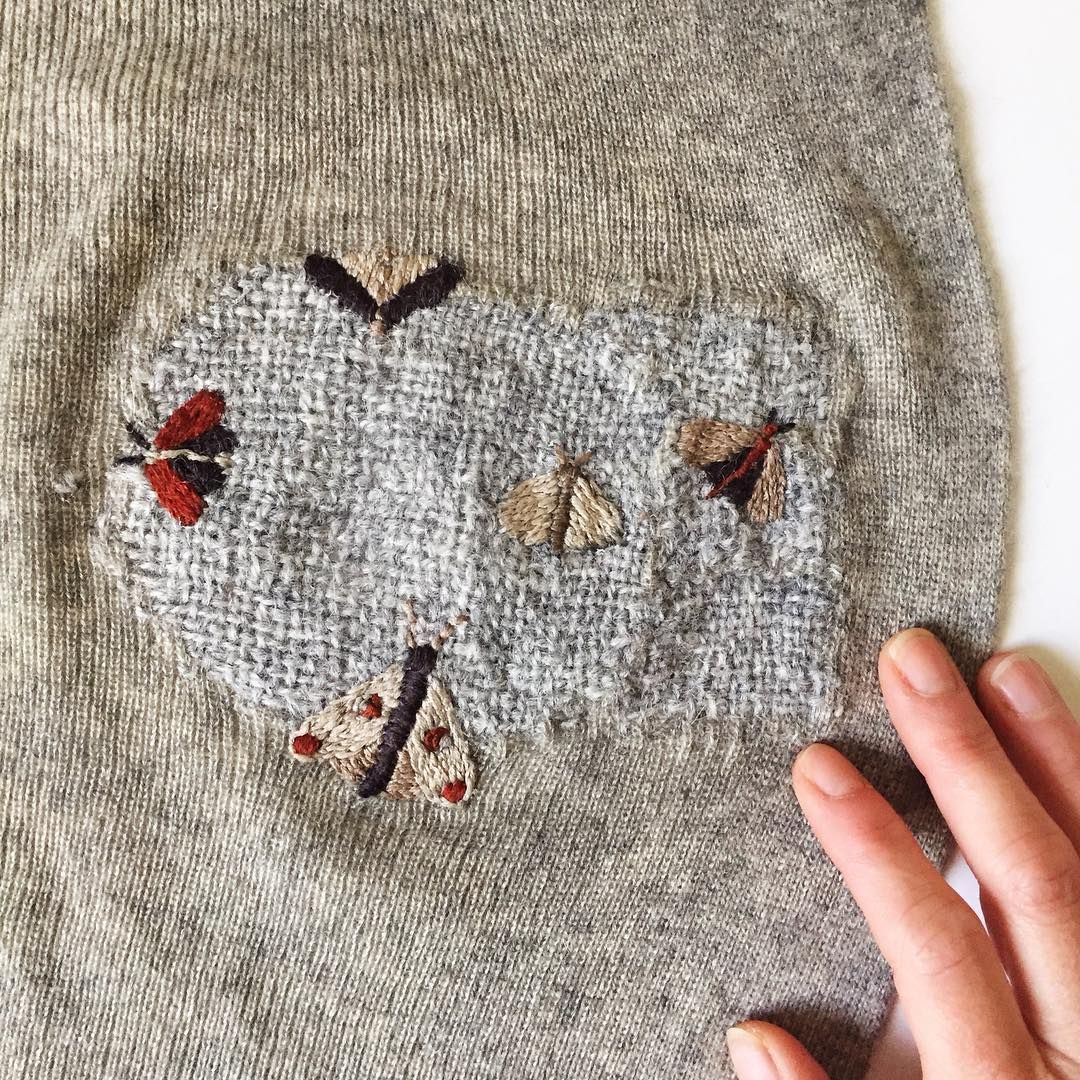How to get rid of moths for good

Image via Erin Eggenburg on Instagram
None of us know what happens behind other peoples’ doors but, have you ever considered what goes on inside your own wardrobe? If, like me, you’ve discovered unexpected holes in cashmere, then chances are, it’s busy in there. In the silence of your closet and deep in the fibres of your favourite sweaters, will be a Bacchanalian feast, a Roman orgy of moth life. They’ll be devouring, procreating, nesting, rebirthing and dying while nestled in your finest natural fibres. A warmer world, milder winters and hotter homes are great news for moths but a source of human dismay as we pick over their sartorial havoc. If moths are part of our future eco-systems and we wish to limit damage to our clothing, then we must learn to vanquish the tenacious termites. Here’s how.
Locate the enemy Prioritise defences where garments have been damaged but aim to tackle all vulnerable areas. Evidence of moths is indicated by mini cobwebs or/and holes on your woollens, cottons, linen or silk. Frass could be a fashionable fragrance but is actually the excrement of insect larvae or the larvae itself.
All out! Remove, shake and classify closet contents accordingly, checking every individual garment. As well as tell-tale frass on garment exteriors, look inside too – along seams, around collars, cuffs, button holes and hems; moths like an edge or shelter. Any damaged garments should be separated from natural and synthetic clothing (also placed in separate piles.)
Exterminate! (to quote the Daleks). Vacuum every corner and edge of your wardrobe then soap down and scrub the space. Remember to change the bag afterwards or you may unwittingly provide an alternative breeding ground. Spray Moth Stop! (From 7.99, Lakeland) then close closet doors for at least four hours, followed by open doors and an airing of another four hours.
It all comes out in the wash (and freeze) Once cleaned and dried, cashmere sweaters should be folded into zip tight food bags and placed in freezer drawers for at least 24 hours which will kill moth eggs and break the cycle. All other garments should be laundered or dry cleaned as appropriate.
Olfactory assault. Imagine walking into an oppressive perfumery of a department store that makes your head swim. Aim to discombobulate and deter moths similarly. The pheromones in dried lavender, cloves, thyme, rosemary in fabric pouches or sandalwood wooden balls will help repel them. There are also sachets that can be popped over coat hangers and you can buy hanging moth traps.
Be prepared. As you replenish your wardrobe with freshly laundered garments, consider packing away what you don’t need, ideally in zip bags and boxes thus avoiding a horrible crush of clothing (also attractive to moths.) Cotton or plastic dress bags can be used to protect hanging garments but if exposed, consider spraying them with moth repellent.
Be Moth Aware. Moths love a sweat patch and food spillages, so be mindful of repeatedly worn clothes being placed back into your wardrobe. Introducing vintage or secondhand knitwear into closets without a thorough clean first is just asking for trouble.
In conclusion, moths are like teeth. It’s better to have regular check-ups than wait until critical attention is needed. Now I know the moth peak seasons are April / May (though we’ve had a chilly spring and it could well be later this year) and August / September, I’ll be making seasonal calendar dates with myself for this bi-annual purging which is intensely cathartic. After all, consuming less means looking after what we have more.
Nilgin Yusuf is a freelance writer. You can find her on Twitter @Nilgin and Instagram @nilgin_yusuf
As well as doing all the clearing/airing I recommend having “Smart Trap” traps around the house and inside every closet.
They work by attracting the males who get stuck onto the female pheromone smelling glue inside. Highly effective. Eliminate the males and there’s no breeding. This is our second season using them, apparently the larvae can be dormant for years so it’s a bit of an ongoing battle but I think we’re winning. They shredded a corner of an oriental rug before we realised last year and I’ve been a bit paranoid ever since. Little or no clothes damage though. Exterminate! Smart Traps available online.